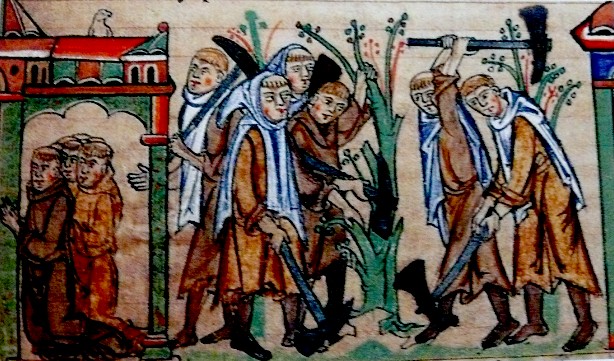How were the medieval Cistercians different?
The Cistercian Order: incorporated instead of founded
Unlike what is generally thought, there was no Cistercian Order as a united entity for much of the twelfth Century. (...) Such a Cistercian Order was only invented in the third quarter of the twelfth century. That Order as we usually think of it, an administrative institution that united more than five hundred abbeys by 1215 (when its organization was held up by the Fourth Lateran Council as a model to be emulated), did not appear in 1119 or 1113 or 1098, the dates usually asserted, but much later.
Carta caritatis: the Cistercian constitution - blue print of the Templar rule
"‘Carta Caritatis’ (also known as the Charter of Charity) is a Cistercian source that is considered ‘the fundamental constitution of the Cistercian Order.’49 There is much debate amongst historians as to when the charter was actually written.
Many historians, including W. A. Parker Mason, believe the charter was completed by 1117, however, the modern historian, Lekai, argues that such a document would have taken decades longer. The work is generally attributed to Stephen Harding, the third abbot of the Cistercian Order, though modern historians agree that he was probably the author of only a primitive version of the source, and that the ‘Carta Caritatis’ was expanded by later generations, as and when it was appropriate....
At face value, the ‘Carta Caritatis’ is startlingly reminiscent of the Rule of Saint Benedict in its structure. However, while the Rule is a guide to how monks live their lives in the monastery, the charter reads much more like a legal document, not a guide, but an order. Thecharter is considered the Cistercian constitution due to its regulations for an intricate network of Cistercian houses. The formation of a constitution illustrates how quickly and rapidly the Cistercian Order had grown, no matter what part of the twelfth century it was written. The complex organisation and the mention of daughter-houses having daughterhouses of their own is testament to this."
This blog quotes freely from the thesis by Lori Firth, Hull University (2012): "A Comparison of the Cistercian and Knights Templar Orders, And the Personal Influence of Bernard of Clairvaux", to be found here. Illustration By Jörg Breu the Elder - The Yorck Project (2002) 10.000 Meisterwerke der Malerei (DVD-ROM), distributed by DIRECTMEDIA Publishing GmbH. ISBN: 3936122202., Public Domain, Link
Origin of the Cistercian Order: isolation and poverty
"The self-induced exclusion from the world discussed in the ‘Exordium Parvum’ is perhaps the first instance we see of the ideal of poverty, which became a part of the (Cistercian) Order’s mantra.
The early Cistercians: back to strict observance of the Rule of St Benedict
"The ‘Exordium Parvum’ is a 12th century Cistercian document that includes the early history of Cîteaux, incorporating official letters and documents with narrative. While this source illustrates to us that the monks left Molesme to pursue a more rigorous devotion to the Rule of St Benedict, yet there is contrary evidence within the ‘Exordium Cistercii’ that tells us that the monks left for a new way of life because Molesme placed too much emphasis on materialistic wealth and possessions.




